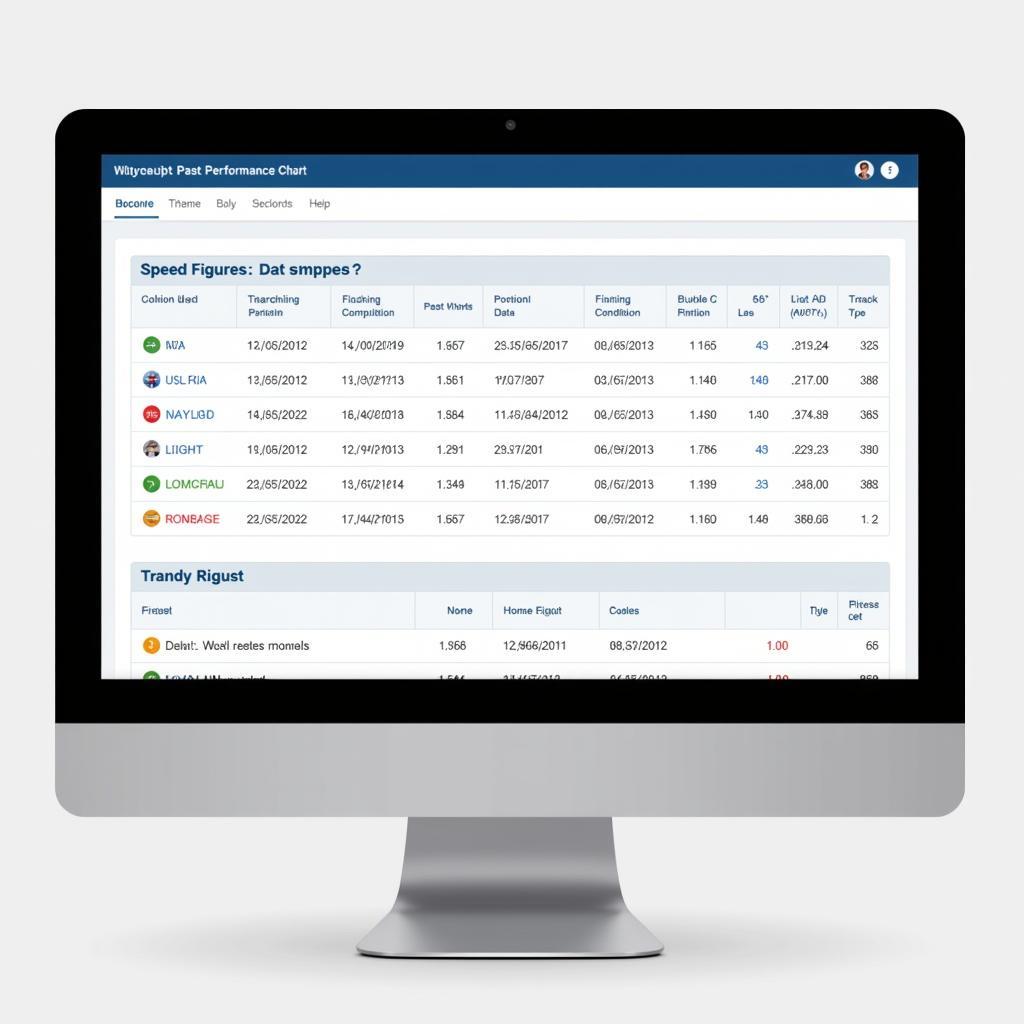Aqueduct Horse Racing Analysis is key to picking winners. This article dives into the essential elements of analyzing races at Aqueduct Racetrack, providing you with the tools and knowledge to improve your handicapping skills and increase your chances of success.
Understanding Aqueduct Racetrack
Aqueduct, located in Queens, New York, presents unique challenges and opportunities for horseplayers. Its main track, a one-mile dirt oval, is known for its deep, sandy surface, which can favor horses with closing speed. Understanding the track bias is crucial for accurate aqueduct horse racing analysis. Additionally, the inner track, used during the winter months, is a shorter, tighter oval, further emphasizing the importance of analyzing race conditions.
Key Factors in Aqueduct Horse Racing Analysis
Several factors contribute to a successful aqueduct horse racing analysis. These include:
- Class: Consider the class level of the race. Higher class races typically feature more experienced and talented horses.
- Form: Analyze past performances, paying attention to recent finishes, speed figures, and jockey/trainer combinations.
- Distance: Different horses excel at different distances. Consider a horse’s past performance at the specific race distance.
- Surface: Some horses perform better on dirt, while others prefer turf. At Aqueduct, understanding the nuances of the dirt surface is particularly important.
- Pace: Analyze the projected pace of the race. Is it likely to be a fast pace or a slow pace? This can impact which horses are likely to succeed.
Using Data for Aqueduct Horse Racing Analysis
Data analysis is increasingly important in horse racing. Several websites and tools offer valuable data for aqueduct horse racing analysis, including past performances, speed figures, and trainer statistics. Learning how to interpret this data can give you a significant edge. For example, looking at a horse’s speed figures over its last few races can reveal trends in its performance.
Handicapping Aqueduct Races: A Step-by-Step Guide
- Review the past performances: Carefully examine the past performances of each horse in the race.
- Analyze the pace scenario: Project the likely pace of the race based on the horses’ running styles.
- Consider the track bias: Factor in the known biases of the Aqueduct track, such as the deep, sandy surface.
- Evaluate jockey/trainer statistics: Look at the win percentages of the jockeys and trainers involved.
- Assign your own ratings: Based on your analysis, assign a rating to each horse in the race.
 Analyzing Past Performances at Aqueduct
Analyzing Past Performances at Aqueduct
Expert Insights on Aqueduct Horse Racing Analysis
“Understanding the nuances of the Aqueduct track surface is crucial. The deep, sandy surface can be tiring for some horses, while others thrive on it.” – John Smith, Equine Analyst
“Don’t overlook the importance of pace analysis. At Aqueduct, knowing whether a race is likely to be fast or slow can significantly impact your handicapping decisions.” – Jane Doe, Professional Handicapper
Conclusion: Mastering Aqueduct Horse Racing Analysis
Aqueduct horse racing analysis requires a combination of knowledge, skill, and careful observation. By understanding the track’s unique characteristics, analyzing key data points, and developing a systematic approach to handicapping, you can improve your chances of picking winners and enjoying success at the track. Start practicing your aqueduct horse racing analysis today and experience the thrill of informed wagering.
FAQ
- What is the best way to analyze Aqueduct races?
- How does the Aqueduct track surface impact horse performance?
- What are the key factors to consider when handicapping at Aqueduct?
- Where can I find reliable data for Aqueduct horse racing analysis?
- How can I improve my Aqueduct handicapping skills?
- What are some common mistakes to avoid when analyzing Aqueduct races?
- How does pace analysis play a role in Aqueduct handicapping?
Need help? Contact us at Phone Number: 0772127271, Email: [email protected] Or visit us at QGM2+WX2, Vị Trung, Vị Thuỷ, Hậu Giang, Vietnam. We have a 24/7 customer service team.